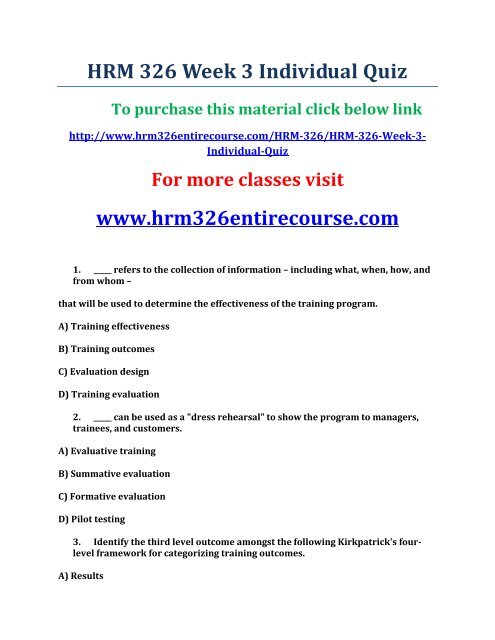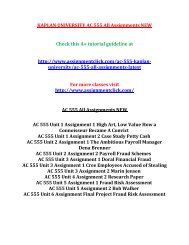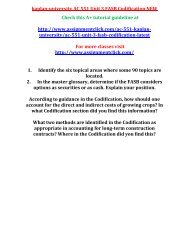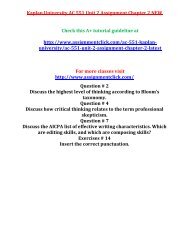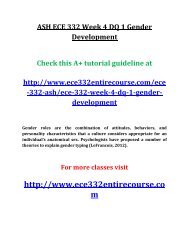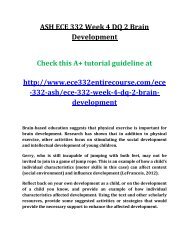UOP HRM 326 Week 3 Individual Quiz
uop hrm 326 week 3 individual diversity training plan,uop hrm 326 week 3 learning team needs analysis,uop hrm 326,hrm 326,uop hrm 326 week 3 tutorial,hrm 326 week 3 assignment,uop hrm 326 week 3 help
uop hrm 326 week 3 individual diversity training plan,uop hrm 326 week 3 learning team needs analysis,uop hrm 326,hrm 326,uop hrm 326 week 3 tutorial,hrm 326 week 3 assignment,uop hrm 326 week 3 help
You also want an ePaper? Increase the reach of your titles
YUMPU automatically turns print PDFs into web optimized ePapers that Google loves.
<strong>HRM</strong> <strong>326</strong> <strong>Week</strong> 3 <strong>Individual</strong> <strong>Quiz</strong><br />
To purchase this material click below link<br />
http://www.hrm<strong>326</strong>entirecourse.com/<strong>HRM</strong>-<strong>326</strong>/<strong>HRM</strong>-<strong>326</strong>-<strong>Week</strong>-3-<br />
<strong>Individual</strong>-<strong>Quiz</strong><br />
For more classes visit<br />
www.hrm<strong>326</strong>entirecourse.com<br />
1. _____ refers to the collection of information – including what, when, how, and<br />
from whom –<br />
that will be used to determine the effectiveness of the training program.<br />
A) Training effectiveness<br />
B) Training outcomes<br />
C) Evaluation design<br />
D) Training evaluation<br />
2. _____ can be used as a "dress rehearsal" to show the program to managers,<br />
trainees, and customers.<br />
A) Evaluative training<br />
B) Summative evaluation<br />
C) Formative evaluation<br />
D) Pilot testing<br />
3. Identify the third level outcome amongst the following Kirkpatrick's fourlevel<br />
framework for categorizing training outcomes.<br />
A) Results
B) Behavior<br />
C) Learning<br />
D) Reactions<br />
4. Skill-based outcomes include acquisition or learning of skills and use of<br />
skills on the job.<br />
A) True<br />
B) False<br />
5. Utility analysis is a cost-benefit analysis method that involves assessing the<br />
dollar value of training based on estimates of the difference in job performance<br />
between trained and untrained employees, and the number of individuals<br />
trained.<br />
A) True<br />
B) False<br />
6. This relates to the learner's decision regarding what information to attend,<br />
how to remember, and how to solve problems<br />
A) Cognitive strategies<br />
B) Intellectual skills<br />
C) Attitudes<br />
D) Verbal information<br />
7. The process of withdrawing positive or negative reinforcers to eliminate a<br />
behavior is known as _____.<br />
A) perception<br />
B) valence<br />
C) instinct<br />
D) extinction
8. Pedagogy gives the instructor major responsibility for making decisions<br />
about learning content, method, and evaluation.<br />
A) True<br />
B) False<br />
9. Learning strategies include rehearsal, organizing, and delegation.<br />
A) True<br />
B) False<br />
10. Seating arrangements at the training site should be based on an<br />
understanding of the desired type of trainee interaction and trainee-trainer<br />
interaction.<br />
A) True<br />
B) False


